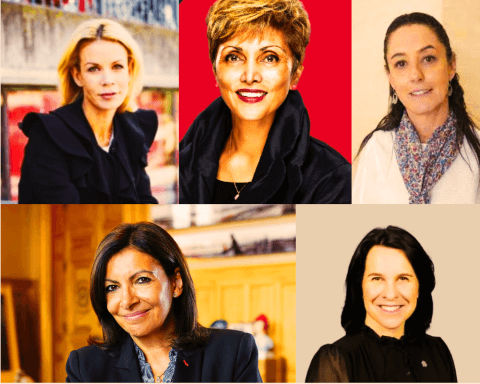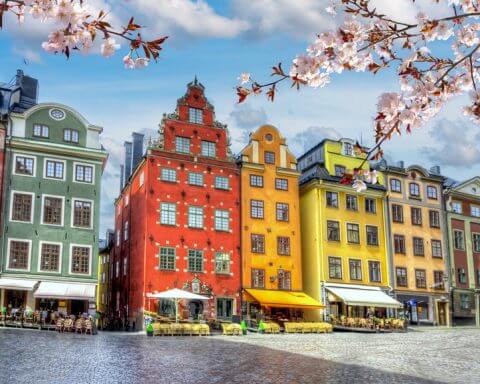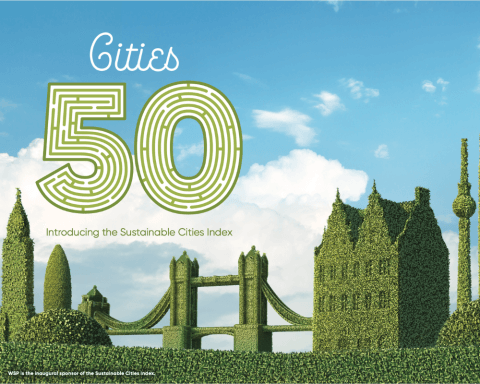It was a revelation reminiscent of Volkswagen’s 2015 emissions reduction scandal. Last fall, the Daily Mail disclosed the harsh conclusions of a British housing economist who debunked the national government’s “energy performance certificates” (EPCs) – a rating system for commercial or residential buildings that are being developed, sold or rented. Thousands of structures that earned high EPC ratings were still emitting lots of carbon due to shortcomings in the ranking system. “In some instances, they may amount to so-called ‘greenwashing’ with consumers effectively being deluded into thinking their ‘energy efficient’ home represents a better outcome for the environment.”
This wasn’t the first time that energy efficiency experts had challenged the EPC rating system. Earlier in 2021, the national government had concluded that an EPC grade didn’t predict how larger buildings actually performed in terms of energy consumption and carbon emissions.
The United Kingdom’s EPC labelling system is hardly unique. Since the early 1990s, hundreds of thousands of developers have opted to build their projects according to elaborate checklists and performance thresholds prescribed by green building organizations. Some, however, have not aged well. Just 12 years ago, a New York developer erected a US$1.8-billion office building, One Bryant Park, praised for its sustainability features and its LEED Platinum rating. Today, the owner faces steep fines because the building’s carbon emissions exceed the cap established by a 2019 New York City bylaw known as Local Law 97.
These clashes reveal two important shifts in the narrative about the carbon footprint of buildings: one is that some green labels don’t really deliver the goods; the second is that local building and energy codes, which traditionally established minimal standards, are playing a much more important role in driving carbon reduction in buildings, which account for about 40% of all greenhouse gases.
Since the early 1990s, the world of voluntary certification has functioned like a marketplace of aspiration. A range of organizations offer seals of approval for a fee. Developers have to jump through hoops that run the gamut from technical air tightness measures and storm water management to fuzzier categories, such as wellness and “ecosystem services.”
The oldest is BREEAM, which originated in the United Kingdom. It commands the largest market share in Europe (560,000 buildings are BREEAM certified) and is seen as the common ancestor for many later certification schemes, including LEED, which has been administered since 1993 by the U.S. Green Building Council (USGBC). As of 2019, the USGBC had issued 100,000 LEED building certifications for commercial projects. Passive House, prevalent in northern Europe, has a narrower mandate focusing on energy performance.
The number of building certification standards has proliferated. A 2017 study published in Building and Environment estimated there are now about 600 green rating systems globally. Developers seek out such certifications not just because they yield greener buildings, but also because those buildings are more marketable, and profitable. In North America, academics and environmentalists have criticized LEED’s approach because developers could game it out, running up their score by adding cosmetic features (e.g., bike parking) that don’t really improve a building’s carbon footprint.
A 2018 study published in the Journal of Exposure Science & Environmental Epidemiology offered a bracing conclusion: “A decade of research suggests that LEED-certified buildings, on average, achieve little or no primary energy savings relative to other similar buildings,” the authors wrote. “Evidence suggests that any reduction in site energy is typically achieved through increased electric use and corresponding off-site energy loss.”
But in the past few years, some governments have stepped into this breach by cranking up their sleepy old building codes as a means of driving decarbonization.
“A decade of research suggests that LEED-certified buildings, on average, achieve little or no primary energy savings relative to other similar buildings.”
–Journal of Exposure Science & Environmental Epidemiology
The City of Toronto and the province of British Columbia, for example, have both adopted what are known as “step codes” – tiered building regulations that set out increasingly stringent energy/carbon performance standards. For private builders, the first-tier requirements are mandatory, and the system works like an escalator: at regular intervals, the second (voluntary) tier becomes the basic mandatory tier, and so on. The fourth and latest version of the Toronto Green Standard went into effect in May.
Under New York’s Local Law 97, property owners whose buildings have more than 25,000 square feet of floor space are required to meet energy efficiency targets and reduce emissions by 20% by 2024 or face fines; even more stringent caps come into effect by 2030.
San Francisco in 2020 banned the use of natural gas in all new buildings, joining New York City and a growing number of municipalities that have taken the same step. California this year amended its own building energy code to require all new homes to be fitted out with solar panels, phase out refrigerants, and establish new standards for heat pumps and electricity storage systems to ease pressure on the grid.
For years, environmentalists have argued that tougher building codes could reduce emissions, and this future seems to have finally arrived, at least in some places. But it raises an interesting question about all those certifications: in a world of tougher codes, will these ecolabels still be necessary?
Thomas Moore, a senior consultant with Steven Winter Associates, a New York–based green building services firm, says the choice of certification is highly dependent on the type of project. For companies or institutions that plan to own a structure for a long time, he says, the best choice is Passive House, which emphasizes airtight building envelopes, high-performance windows and extensive insulation, all of which is meant to minimize heat loss and thus reduce energy consumption by as much as 90%.
“People in New York City with projects that achieved high LEED ratings are now being told that there’s a new law on carbon emissions that wasn’t accounted for 10 or 20 years ago and [they] will get a fine.”
–Yetsuh Frank, managing director of Building Energy Exchange
Passive House certification, moreover, has to be earned through verification of the completed project’s actual energy performance, not via checklists of features that generate points, as is the case with LEED (i.e., a LEED Platinum building must score over 80, whereas LEED Certified is 40 to 49). “If you’re a long-term investor and will hold on to a building for 50 years,” Moore says, “then Passive House aligns very well.” Some point to the fact that one way to achieve Passive House certification is to use a lot of petrochemical-based insulation, which drives up embodied carbon. But life-cycle analysis will be mandatory by the end of the decade.
Toronto now accepts Passive House–grade energy modelling results as a means of demonstrating compliance with the Toronto Green Standard. By 2030, they’ll no longer be optional. New York, by contrast, took a more hard-edged approach with Local Law 97, which has firm 2025 deadlines and real fines. By 2024, New York will also have an all-electric building regulation.
These new building codes represent a sea-change, says architect Yetsuh Frank, managing director of Building Energy Exchange, a non-profit that seeks to educate building owners on decarbonization. “People in New York City with projects that achieved high LEED ratings are now being told that there’s a new law on carbon emissions that wasn’t accounted for 10 or 20 years ago and [they] will get a fine.” He points out that by emphasizing the stick as much as the carrot, New York legislators have forced property managers and their bankers to pay more attention to the risk exposure associated with failing to update older buildings.
Moore is also seeing more projects where the developer is layering on certifications; that is, using not just LEED or Passive House, but others that measure related aspects of a building’s performance, like healthy indoor environments. “That’s what buyers care about,” he says, pointing out that certification systems like Well and Passive House are highly complementary.
All of this activity offers more proof that we simply have to find ways to make buildings that generate fewer emissions and don’t make their inhabitants sick; neither are nice-to-haves. Indeed, it may be that the voluntary building-certification systems that evolved over the past three decades will eventually become obsolete. The sooner we get to that day, the better.
Toronto journalist John Lorinc writes about cities, sustainability and business.






